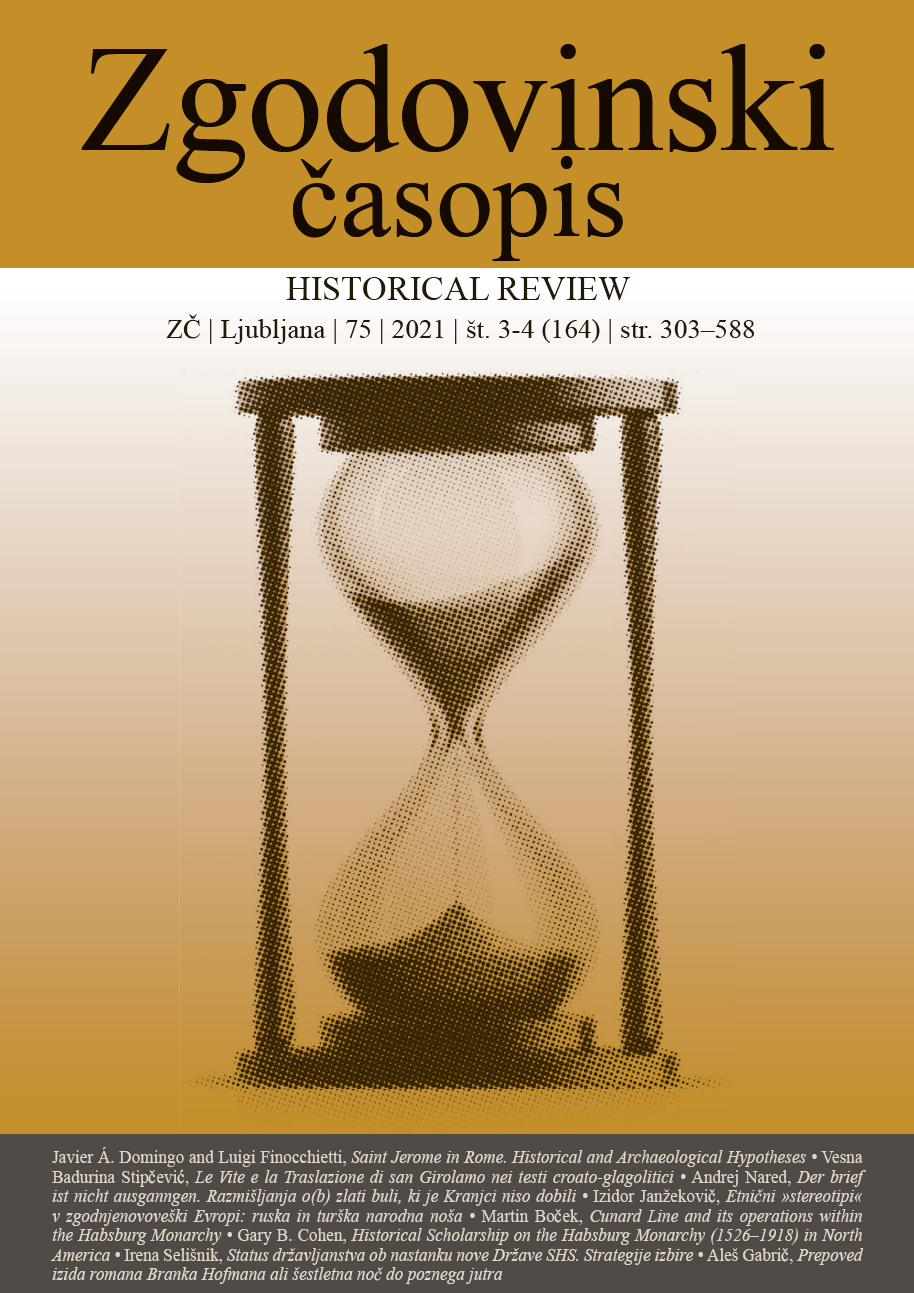Ethnic "Stereotypes” in Early Modern Europe: Russian and Turkish National Costumes
DOI:
https://doi.org/10.56420/Zgodovinskicasopis.2021.3-4.04Keywords:
ethnic stereotypes, Styrian Völkertafel, early moder era, Russia, TurkeyAbstract
The paper analyses the early modern European ethnic stereotypes and various sources that spread such stereotypes. These ethnic stereotypes were produced and reproduced in many languages and across the national boundaries in early modern Europe. Among many stereotypes or characteristics, clothing was often perceived as people- or nation-specifi c. E.g., the Russian national costume contained ‘fur’ and long beards, while the Turkish included a turban and was characterized as ‘womanly.’ The starting point of the paper is the eighteenth-century’s Styrian Völkertafel. Step by step, these stereotypes were traced back to the sixteenth century when there was an increase of new ethnographic images. This work draws upon a variety of sources, from textual to visual, to show how thin the line is between a hypothetical objective description, error or misrepresentation, stereotype and prejudice.


